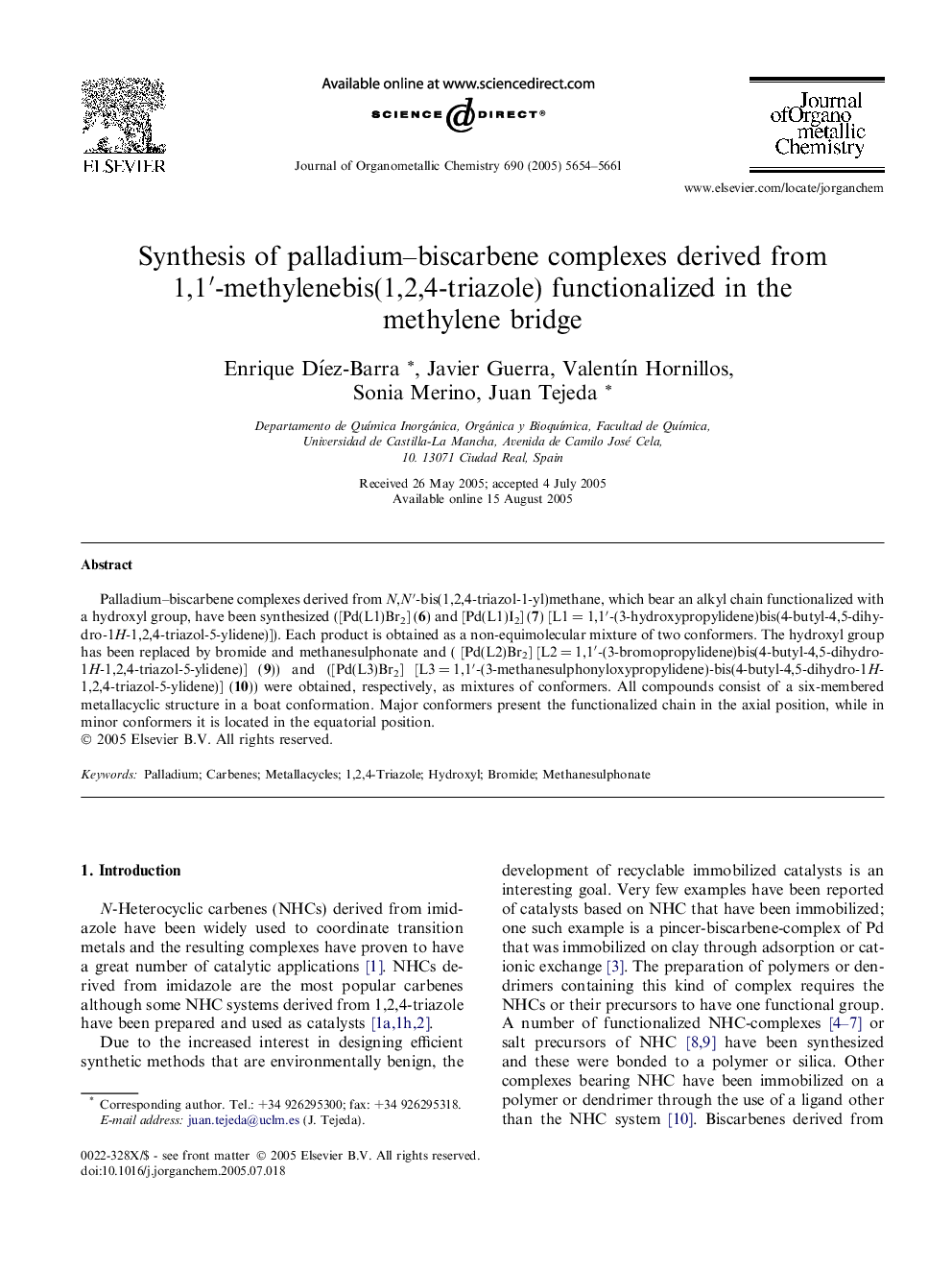| Article ID | Journal | Published Year | Pages | File Type |
|---|---|---|---|---|
| 1326080 | Journal of Organometallic Chemistry | 2005 | 8 Pages |
Palladium–biscarbene complexes derived from N,N′-bis(1,2,4-triazol-1-yl)methane, which bear an alkyl chain functionalized with a hydroxyl group, have been synthesized ([Pd(L1)Br2] (6) and [Pd(L1)I2] (7) [L1 = 1,1′-(3-hydroxypropylidene)bis(4-butyl-4,5-dihydro-1H-1,2,4-triazol-5-ylidene)]). Each product is obtained as a non-equimolecular mixture of two conformers. The hydroxyl group has been replaced by bromide and methanesulphonate and ( [Pd(L2)Br2] [L2 = 1,1′-(3-bromopropylidene)bis(4-butyl-4,5-dihydro-1H-1,2,4-triazol-5-ylidene)] (9)) and ([Pd(L3)Br2] [L3 = 1,1′-(3-methanesulphonyloxypropylidene)-bis(4-butyl-4,5-dihydro-1H-1,2,4-triazol-5-ylidene)] (10)) were obtained, respectively, as mixtures of conformers. All compounds consist of a six-membered metallacyclic structure in a boat conformation. Major conformers present the functionalized chain in the axial position, while in minor conformers it is located in the equatorial position.
Graphical abstractPalladium–biscarbene complexes derived from N,N′-bis(1,2,4-triazol-1-yl)methane containing an alkyl chain functionalized with hydroxyl group have been synthesized. Each compound was obtained as a non-equimolecular mixture of two conformers. The hydroxyl group has been changed to methanesulphonate or bromide and two new mixtures of conformers were obtained.Figure optionsDownload full-size imageDownload as PowerPoint slide
